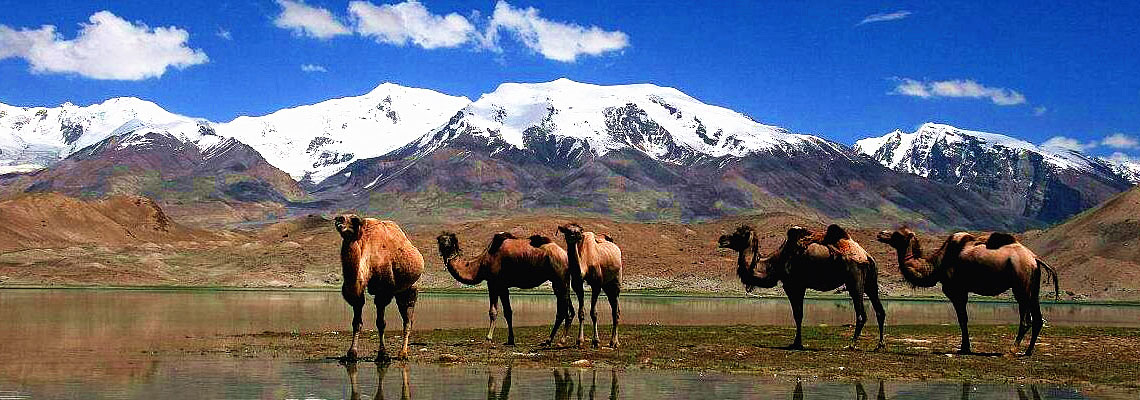
Day 1
Transfer to Kashgar-
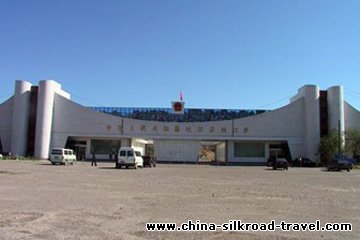
- Apak Hoja Tomb
Our nice guide will meet you at the border (Irkistab/Turgat/Kunjirap) there is no suitable restaurant in the border, so we will prepare something for our distinguished customers. Then head to Kashgar and check in the hotel. The rest of the day free to do some exploration at your leisure.
Day 2
Kashgar City Tour-
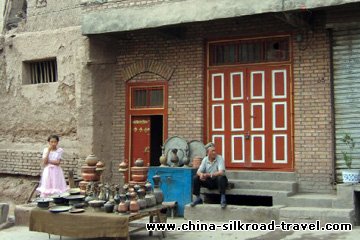
- Id Kah Mosque
Morning breakfast at the hotel, then we will take the Kashgar city Tour and visit the Id Kah Mosque, Abakh Khoja Tomb and the Handicraft Street.
Id Kah Mosque: This is the largest mosque in China, and the most famous mosque in Xinjiang. The construction of the mosque started in the middle of the 15th century, and the mosque has gradually developed to its present size. The buildings of Id Kah Mosque look magnificent and solemn, and display the artistic styles of Islamic mosque architecture. The Mosque has an area of about 16,800 square meters, consisting of the Pray Hall, the Koran teaching Hall, the Corridor, the Arches and other buildings attaching to it. The Pray Hall of the mosque, which can hold 4,000 prayers, is supported by 140 carved wooden pillars.
Apakh Hoja Tomb: This Mazar is the holiest place in Xinjiang for the Muslims, and an architectural treasure. Built in 1640, it is reminiscent of the Central Asian artistic style of Samarkand or Isfahan. The site is also known as the Xiang Fei (Fragrant Concubine) Tomb in memory of Abakh Khoja's granddaughter, Iparhan, who was the Fragrant Concubine of Emperor Qianlong of Qing Dynasty. A handsome blue-and-white tiled gate leads into the compound, which includes a small religious school and the Abakh Khoja family tomb. The latter is domed and faced with muti-color tiles. It is the most complete Islamic tomb dating from the beginning of the Qing Dynasty.
Handicraft Street: Handicraft Street, or Zhiren Street, is a fascinating place showing the distinctive custom and culture of Kashgar, with many full-time handicraftsmen working on the street and hundreds of workshops and booths alongside. This street is an exhibition for traditional Kashgar and mid-Asian handicrafts. Copper, metal, porcelain, woodwork, jewellery and other goods are seen to be made here and you will marvel at the incredible devices like the wooden objects that prevent babies from wetting the bed.
Day 3
Kashgar-
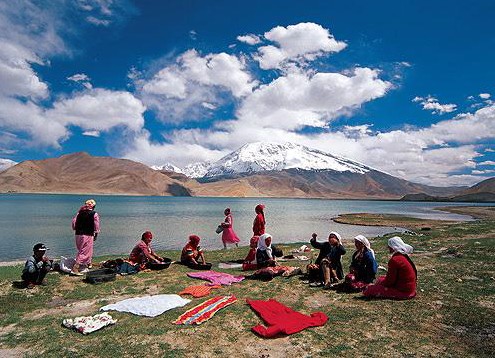
- Karakul Lake
After breakfast we will drive on the China and Pakistan highway to visit the Karakul Lake and enjoy the Pamir landscape. Have packed lunch by the side of the lake then continue your excursion to Taxkorgan county.
Karakul Lake: At an altitude of 3600m, this is the highest lake of the Pamir plateau, near the junction of the Pamir, Tianshan (Heavenly Mountain), and Kunlun Mountain ranges. Surrounded by mountains which remain snow-covered throughout the year, the three highest peaks visible from the lake are the Muztag Ata (7546m), Konur Tagh (7649m) and Kongur Tiube (7530m). The lake is popular among travelers for its beautiful scenery and the clarity of its reflection in the water, whose color ranges from a dark green to azure and light blue. There are two Kirgiz settlements along the shore of Karakul Lake, a number of yurts about 1 km east of the bus drop-off point and a village with stone houses located on the western shores.
Day 4
Taxkorgan county-
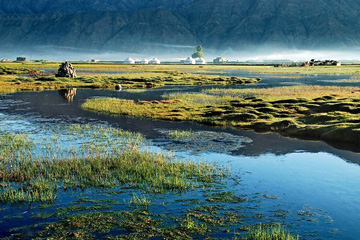
- Karakorum high
Today you will enoy the folklore of the Tajik Pepole and visit the Stone Fortress. After lunch back to Kashgar by the Karakom Highway, and visit the Old Town upon arrival.
Stone fortress: Located on a tableland northeast of the county seat of Taxkorgan Tajik Autonomous County, it covers an area of 100,000 square meters and consists of ruins of city and temple of the Tang Dynasty era and a Qing Dynasty government office. The temple occupied the eastern part of the city. In the western and southeastern parts are found ruined houses. On the ruins of the temple the Pulitin Office of the Qing Dynasty was built. The city is oval in shape, and the city walls were built with sun-dried bricks on stone foundation. It is 1285 meters in circumference outside.
Karakorum Highway: The Karakorum Highway, or China-Pakistan Friendship Highway, is more than 1200 km long. It was opened to the public in 1979. Due to its high elevation (more than 4700m at its highest point) and the difficult conditions in which it was constructed, it is often called the 8th Wonder of the World. The Karakorum Highway traces one of the ancient Silk Roads. The Silk Road merchants then had to climb through the Wakhan Corridor, north of the high mountains of Karakorum and Hindu Kush, to get to India, Pakistan and onward to Iran. While you are on the Karakorum Highway, you can enjoy the scenery of Mt. Muztagh, and Taxkorgan, which in Persian language means stone castle. The brave Tajiks people had lived their nomadic life in Taxkorgan on the Pamir Plateau for more than 2000 years.
Old Town: Kashgar is an ancient city, and in walking the streets of its Old Town, one gets the sense of what this legendary Central Asian hub was like in the days when the Silk Road was at its zenith. 500-year old remnants of the city wall, narrow lanes and colorful multi-ethnic crowds combine to make Kashgar’s historic district a highlight of any visit to the city. Visit the small alleys to look at the characteristic Uygur residences. You will experience and enjoy the culture and history that has been retained in the small alleys and deep courtyards. In the alleys on platforms beside the residence you could marvel at the even more ancient primitive workshops for hand-made earthenware. Some 17 or 18 antique workshops have been restored.
Day 5
Kashgar
After breakfast, we will check out of the hotel and take a border transfer.
| Travel in party of |
Superior Class ★★★★★ |
Deluxe Class ★★★★ |
Tourist Class ★★★ |
| 2-5 persons | $ | $ | $ |
| 6-9 persons | $ | $ | $ |
| 10 persons & above | $ | $ | $ |
| Single room Supplement | $ | $ | $ |
Service included:
√ Excellent English speaking guide
√ Hotel (twins bed shared room) with breakfast listed in the itinerary
√ Entrance fee listed
√ Government tax and travel insurance
Service excluded:
* personal expenses such as tips to the guide and driver

